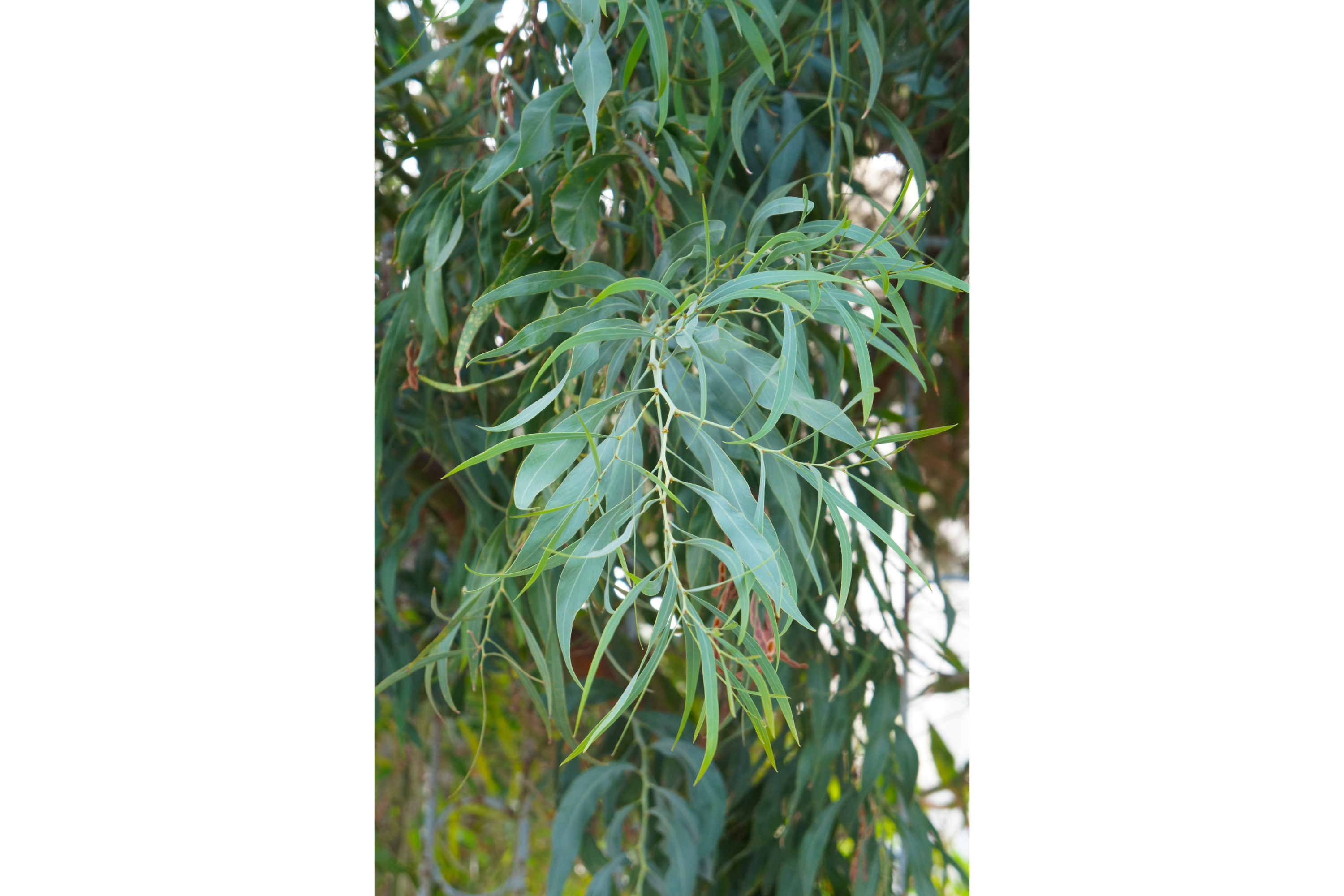Narrow-leaved black peppermint
(Eucalyptus nicholii)

Description
Eucalyptus nicholii, commonly known as the narrow-leaved black peppermint or willow peppermint, is a species of small to medium-sized tree that is endemic to New South Wales. It has thick, rough, fibrous bark on the trunk and branches, small, narrow adult leaves, flower buds arranged in groups of seven, white flowers and small, hemispherical, bell-shaped or conical fruit. Eucalyptus nicholii is a tree that typically grows to a height of 15–18 m (49–59 ft) and forms a lignotuber. It has thick, rough, fibrous, yellowish-brown to grey-brown bark with red-brown underlayers. The bark is coarsely fissured on the trunk and branches, but the outer branches sometimes have smooth bark that is shed in short ribbons. Young plants and coppice regrowth have dull, greyish, linear to narrow lance-shaped leaves 20–64 mm (0.79–2.52 in) long and 2–10 mm (0.079–0.394 in) wide. Adult leaves are the same dull greyish green on both sides, narrow lance-shaped, 60–140 mm (2.4–5.5 in) long and 5–12 mm (0.20–0.47 in) wide on a petiole 5–15 mm (0.20–0.59 in) long. The flower buds are arranged in leaf axils in groups of seven on an unbranched peduncle 3–8 mm (0.12–0.31 in) long, the individual buds on pedicels 2–4 mm (0.079–0.157 in) long. Mature buds are oval, 3–5 mm (0.12–0.20 in) long and 2–3 mm (0.079–0.118 in) wide with a conical operculum. Flowering occurs from late summer to early autumn and the flowers are white. The fruit is a woody hemispherical, bell-shaped or conical capsule 3–4 mm (0.12–0.16 in) long and 3–5 mm (0.12–0.20 in) wide with the valves protruding slightly above the rim of the fruit. The narrow-leaved black peppermint grows in shallow, relatively infertile soils overlying shale and slate bedrock usually as part of grassy or sclerophyll woodlands, in association with Eucalyptus andrewsii and Eucalyptus caliginosa. Its distribution is limited to the Northern Tablelands, New South Wales, particularly in the Walcha to Tenterfield, area and to the east. The species is sparsely distributed, but most commonly occurs in the central areas of its range. Eucalyptus nicholii was first formally described in 1929 by Joseph Maiden and William Blakely in Maiden's book, A Critical Revision of the genus Eucalyptus. The specific epithet honours Maiden's private secretary and "Chief Clerk, Botanic Gardens", Richard Nicol.
Taxonomic tree:







